Qlik Sense Data Architect Certification Exam - February 2021 Release
Last Update 2 months ago
Total Questions : 50
Qlik Sense Data Architect Certification Exam - February 2021 Release is stable now with all latest exam questions are added 2 months ago. Incorporating QSDA2021 practice exam questions into your study plan is more than just a preparation strategy.
QSDA2021 exam questions often include scenarios and problem-solving exercises that mirror real-world challenges. Working through QSDA2021 dumps allows you to practice pacing yourself, ensuring that you can complete all Qlik Sense Data Architect Certification Exam - February 2021 Release practice test within the allotted time frame.
A data architect of an organization that has implemented Qlik Sense on Windows needs to load large amounts of data from a database that is continuously updated
New records are added, and existing records get updated and deleted. Each record has a LastModified field.
All existing records are exported into a QVD file. The data architect wants to load the records into Qlik Sense efficiently.
Which steps should the data architect take to meet these requirements?
A data architect needs to load Table_A from an Excel file and sort the data by Field_2.
Which script should the data architect use?
A)
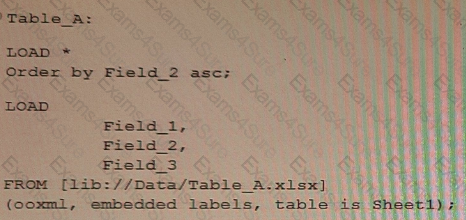
B)
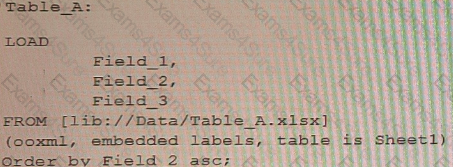
C)
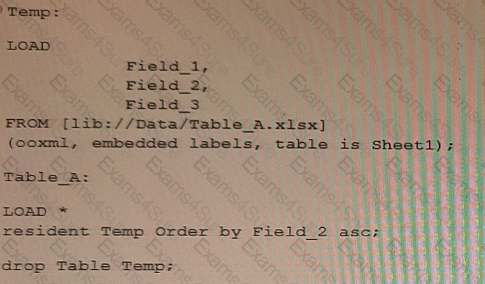
D)
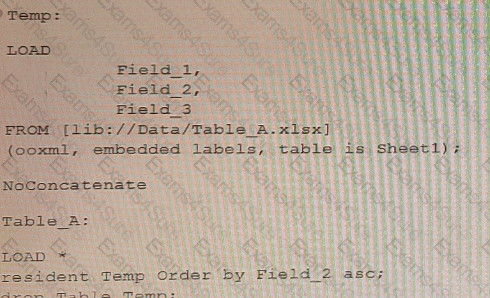
A data architect needs to write the expression for a measure on a KPI to show the sales person with the highest sales The sort order of the values of the fields is unknown When two or more sales people have sold the same amount, the expression should return all of those sales people
Which expression should the data architect use?
Refer to the exhibits.
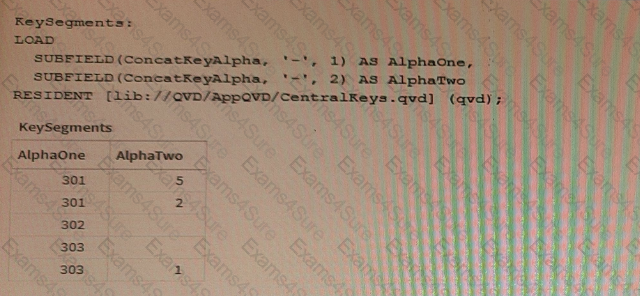
While debugging an app, a developer loads data from an application layer QVD file.
In the process of separating a concatenated key into two parts, some split results are missing data
What should the data architect do?

Refer to the exhibits.
An app is built to analyze salesperson performance by department. Departments are unique within the Departments table, but Salespeople often move between departments. A strict business rule states that a salesperson must be associated with ONLY one department at all times.
The data architect creates a summary of department performance and notices the values are incorrect. The total sales KPI shows the correct result.
How should the data architect modify the data model to correct this issue?
A data architect needs to arrange data to create an app with a map where multiple location points consolidate into hexagonal areas based on postal codes
The areas will be color coded based on the number of vendors in the location.
Which GeoAnalytics operation should the data architect use?
ITALY IT001 HR
GERMANY DE002 HR
SPAIN SP03 FINANCE
FRANCE FRO04 SALES
Refer to the exhibit
A company stores the employee data within a key composed of Country UserlD, and Department. These fields are separated by a blank space. The UserlD field is composed of two characters that indicate the country followed by a unique code of two or three digits. A data architect wants to retrieve only that unique code.


TESTED 29 Mar 2025
Hi this is Romona Kearns from Holland and I would like to tell you that I passed my exam with the use of exams4sure dumps. I got same questions in my exam that I prepared from your test engine software. I will recommend your site to all my friends for sure.
Our all material is important and it will be handy for you. If you have short time for exam so, we are sure with the use of it you will pass it easily with good marks. If you will not pass so, you could feel free to claim your refund. We will give 100% money back guarantee if our customers will not satisfy with our products.